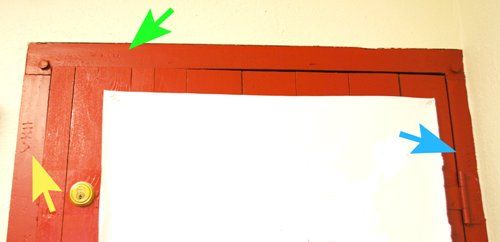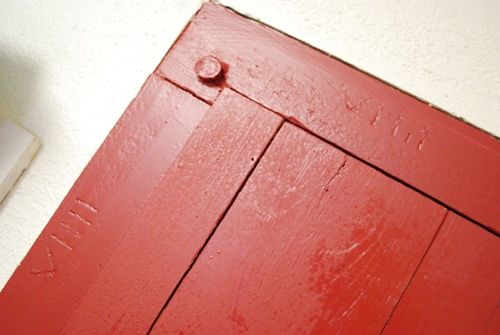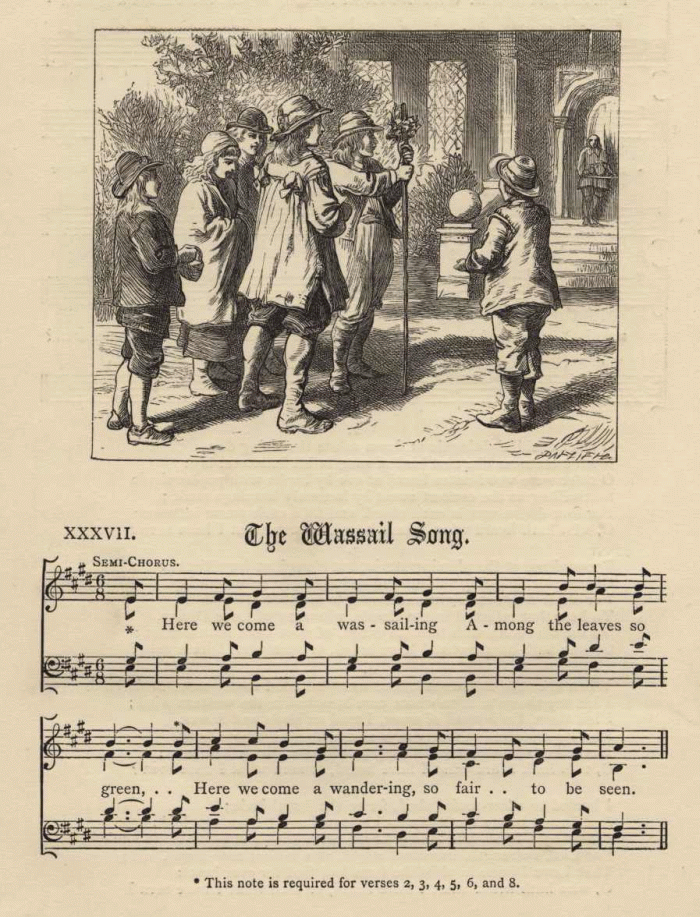The following appeared in the January 26, 1920 Evening Public Ledger:
PENNSYLVANIA FARMS FOR SALE
GRAEME PARK FARM of 191 ares, 18 miles from Phila., in Horsham township, Montgomery county. For particulars address M.B. Penrose, Hatboro, R.F.D., Pa.
The Library of Congress has made historic newspapers, dating from 1836-1922, available in their Chronicling America Series. Papers are easily searchable by keywords and location.
Saturday, January 26, 2013
Saturday, January 19, 2013
A Colonial Valentine
Elizabeth Graeme Fergusson led a life of wealth and privilege, romance and intrigue, followed by heartbreak, poverty, and sorrow. One of the most highly regarded women of her time, she was well educated, the daughter of a prominent Philadelphia physician and the granddaughter of the former Lt. Governor of Pennsylvania. She spent her summers at idyllic Graeme Park and her winters enjoying the social scene in Philadelphia. A published poet and socialite, she hosted famed literary gatherings and counted luminaries of Philadelphia’s political, social and intellectual elite amongst her closest friends and confidents.
Early in life, she seemed to have it all: engaged to William Franklin, money, prestige, family connections, and success. So how did it all go so wrong for her? Left broken-hearted when Franklin married another, the untimely deaths of her parents, an ill-fated marriage to Loyalist Henry Hugh Fergusson, and the subsequent Revolutionary War were to drastically alter the course of Elizabeth’s life. Her husband’s loyalties left Elizabeth fighting to keep her ancestral home and scant few of her possessions. Her husband returned to England, branded a traitor, rumors of his infidelity swirling through Philadelphia. She alienated all but her closest friends in her attempts to find out the truth about Henry’s “indiscretions.” Financial woes forced Elizabeth out of her beautiful estate at Graeme Park to take up rooms as a boarder and then guest in someone else’s home. Her last years were spent in virtual seclusion, only one friend by her side.
Learn about Elizabeth’s loves and losses on Graeme Park’s annual Valentine’s Day Tour, featuring costumed actors portraying scenes from Elizabeth’s life in vignettes throughout the historic Keith House. Tours are on Sunday, February 10 and will run approximately every half hour between 12:00 noon and 3:00 p.m. The cost is $12/person which includes light refreshments in the Visitor’s Center. No reservations. Call 215-343-0965 for more information. Directions are available at www.graemepark.org.
Friday, January 11, 2013
What Is It? Where Is It? (January): Marriage Marks

Last week we started a new monthly photo project called "What Is It? Where Is It?" As you might expect, we're asking readers to guess what we've featured in the photograph and where it is located around Graeme Park. January's "contest" (there are no prizes or anything, it's just for fun and bragging rights) featured the image above. Apparently it was a stumper as we had no responses, so let's get on with the answer, shall we?

The photograph features what are called "marriage marks" or sometimes "carpenter's marks" and they're located around the closet door in the state's Historic Preservation field office here in the Visitors' Center (sorry, it was hard to get them to all show up in the same photograph). Here's a better view of the top and left side of the frame:

And the right side of the frame, partly covered by the hinge:

Each piece is marked "VIIII" (more or less a Roman numeral system but there are regional and cultural differences in the implementation) and the marks are to help the builder match up the pieces which are specifically cut to fit with one another and not with other similar pieces. These marks are commonly found in old timber frame buildings and barns because the pieces are cut and fit on the ground and then erected (just think of putting together IKEA furniture - piece A fits with piece A, B with B, etc.). Often the marks on the main structural elements are cut on the outside of the timbers so they're covered by the barn cladding, but you will also find them upstairs on the threshing floor of our barn cut into some of the posts and beams that support the barn.
In this older method of framing, called "scribe rule," each of the joints are custom fit to one another taking into account the irregularities of the timbers. Later came the "square rule" method which involved squaring off the timbers where they joined together and using more precise measurements which therefore made the pieces interchangeable with other pieces that performed the same function.
For more discussion on scribe rule vs. square rule, see Connecticut Barns and for more on marriage marks, see Holder Bros. Timber Frames.
Sunday, January 6, 2013
Twelfth Night
 |
| "The King Drinks" by David Teniers the Younger depicts Twelfth Night revelers |
Twelfth Night was one of the most celebrated Christian holidays in the 18th century. It marked the end of the Twelve Days of Christmas and the coming of Epiphany. Most calendars put Twelfth Night on January 6 (the night of Epiphany) but others put it on January 5, the end of the twelve day period beginning on Christmas Day.
In medieval and Tudor England Twelfth Night marked the end of a winter festival that started on All Hallows Eve (Halloween). The Lord of Misrule presided and symbolized the world turning upside down. On this day the King and all those who were high would become the peasants and all those who were peasants would rise in status. At the beginning of the Twelfth Night festival, a cake that contained a bean was eaten. The person who found the bean would rule the feast. Midnight signaled the end of his rule and the world would return to normal. This Lord of Misrule tradition dates back to pre-Christian European festivals such as the Celtic festival of Samhain and the Ancient Roman festival of Saturnalia.
Food and drink are the center of modern celebrations, and the most traditional recipes go back many centuries. Particularly in England, the punch called Wassail is consumed throughout the Christmas season, but especially on Twelfth Night.

Around the world, special pastries, such as the Tortell and King Cake are baked on Twelfth Night, and eaten the following day for the Feast of the Epiphany celebrations. In English and French custom, the Twelfth Night Cake was baked to contain a bean and a pea, and those who received the slices containing them would be designated King and Queen of the night's festivities - sometimes they were also made responsible for the expenses of the evening as well.
In colonial America, a Christmas wreath was always left up on the front door of each home, and when taken down at the end of the Twelve Days of Christmas, any edible portions would be consumed with the other foods of the feast. The same held true in the 19th- and 20th-centuries with fruits adorning Christmas trees. Fresh fruits were hard to come by, and were therefore considered fine and proper gifts and decorations for the tree, wreaths, and home. In more modern times, some consider it unlucky to leave Christmas decorations up after Twelfth Night as a result of this tradition.
Since Twelfth Night was a day most families were gathered anyway, it was a popular day for weddings. Because of this, Twelfth Night Cake can also be found in many period cookbooks under the name of Bride's Cake. (Information from wikipedia and Jas. Townsend)
Wassail Recipe
From Colonial Williamsburg. The name comes from the traditional toast "Wass Hael" which meant "be whole" or "be well."
Ingredients
1 cup sugar
4 cinnamon sticks
3 lemon slices
2 cups pineapple juice
2 cups orange juice
6 cups dry red wine
½ cup lemon juice
1 cup dry sherry
2 lemons, sliced
Directions:
Boil the sugar, cinnamon sticks, and 3 lemon slices in ½ cup of water for 5 minutes and strain. Discard the cinnamon sticks and lemon slices.
Heat but do not boil the remaining ingredients. Combine with the syrup, garnish with the lemon slices, and serve hot.
Twelfth-Night Cake Recipe
From The London Art of Cookery, by John Farley, 1800 (reproduced and updated by Jas. Townsend (www.jas-townsed.com). We've removed the directions for cooking in a wood fired oven and mixing by hand from the original recipe and used only Townsend's instructions for modern cooking.
Ingredients
8 oz. unsalted butter
1 1/2 c. powdered sugar
1/2 tsp. each, salt, ground nutmeg, cinnamon, ginger
1/4 tsp. each, ground allspice, mace, coriander
4 eggs
1 egg yolk
1/4 c. brandy
1 1/2 c. pastry flour
1 c. raisins or currants
1 c. slivered almonds
1/2 c. candied orange rind
1/2 c. candied lemon rind
butter for baking pan
Meringue
3 egg whites
1/2 tsp. lemon juice
3/4 c. powdered sugar
Directions
Preheat your oven to 275-degrees (F)
Cream together the butter and sugar, then stir in the salt, spices and brandy. Beat in eggs, one at a time, then beat 7 minutes with an electric mixer. The batter will be light an airy, sift in flour a little at a time, folding it in until just incorporated. Gently fold in raisins, almonds, and candied rinds. Line the bottom of your baking dish with paper, and coat both the paper and the pan with butter, or if using a cake mold, liberally butter the inside surface. Fill the pan to the brim with your batter (don't forget to hide the bean or a small toy in the cake), then smooth over the top of the batter. Makes about 6 cups of batter.
Bake for 3 hours. The cake should be golden brown and a toothpick inserted should come out clean.
Allow the cake to cool slightly, then run a knife around the inside of the pan and invert onto a serving dish.
When the cake is completely cooled, whip the egg whites, and lemon juice until stiff peaks form. Gently sift and fold in the powdered sugar, a little at a time. Spread the meringue on the cake, then place back in a 250-degree (F) oven for 15 minutes, until the meringue sets.
Saturday, January 5, 2013
What Is It? Where Is It? (January)
Well hello, Happy New Year and welcome to the first installment of "What is It? Where is It?" (shall we call it Wii-Wii for short?) Instead of First Friday Fotos, where we shot the same scene on the first Friday of every month in 2012, this year's monthly photo project will feature a close-up of some detail at Graeme Park and readers will be asked to guess, as you might expect, what it is, and where it is located in the Keith House, summer kitchen or barn. The schedule will be a little looser (i.e. not always the first Friday, luckily, since today is Saturday and I would have already missed my first assignment!), but the goal is to offer up one guessing game per month with the answer to follow about a week later. No prizes will be awarded for correct answers, but you will earn bragging rights and, if you wish, we'll call you Smarty Pants.
So without further ado, What is It? Where is It?
Thursday, January 3, 2013
Historical News and Notes: Welsh Strawbridge to Wed Margaret Marshall
The following notice appeared in the Evening Public Ledger on January 3, 1922:
Social Activities
Mr. John Strawbridge will attend as best man and Mr. H. Morris Adams, Mr. Russell H. Johnson, Jr., Mr. Robert S. Welsh, Mr. Thomas Stokes, Mr. John W. Stokes and Mr. Stephen G. Kent will attend as ushers at the wedding of Miss Margaret Ely Marshall, daughter of Dr. and Mrs. George Morley Marshall of 1815 Spruce Street, and Mr. Welsh Strawbridge, son of Mrs. George Strawbridge, of Germantown, which will be solemnized at noon tomorrow in the Calvary Presbyterian Church, to be followed by a small reception at the home of the bride's parents. Mr. Strawbridge and his bride will spend their wedding trip abroad. On their return they will be at home after May 1, at Graeme Park, Hatboro, Pa.
The Library of Congress has made historic newspapers, dating from 1836-1922, available in their Chronicling America Series. Papers are easily searchable by keywords and location.
Social Activities
Mr. John Strawbridge will attend as best man and Mr. H. Morris Adams, Mr. Russell H. Johnson, Jr., Mr. Robert S. Welsh, Mr. Thomas Stokes, Mr. John W. Stokes and Mr. Stephen G. Kent will attend as ushers at the wedding of Miss Margaret Ely Marshall, daughter of Dr. and Mrs. George Morley Marshall of 1815 Spruce Street, and Mr. Welsh Strawbridge, son of Mrs. George Strawbridge, of Germantown, which will be solemnized at noon tomorrow in the Calvary Presbyterian Church, to be followed by a small reception at the home of the bride's parents. Mr. Strawbridge and his bride will spend their wedding trip abroad. On their return they will be at home after May 1, at Graeme Park, Hatboro, Pa.
The Library of Congress has made historic newspapers, dating from 1836-1922, available in their Chronicling America Series. Papers are easily searchable by keywords and location.
Subscribe to:
Posts (Atom)


